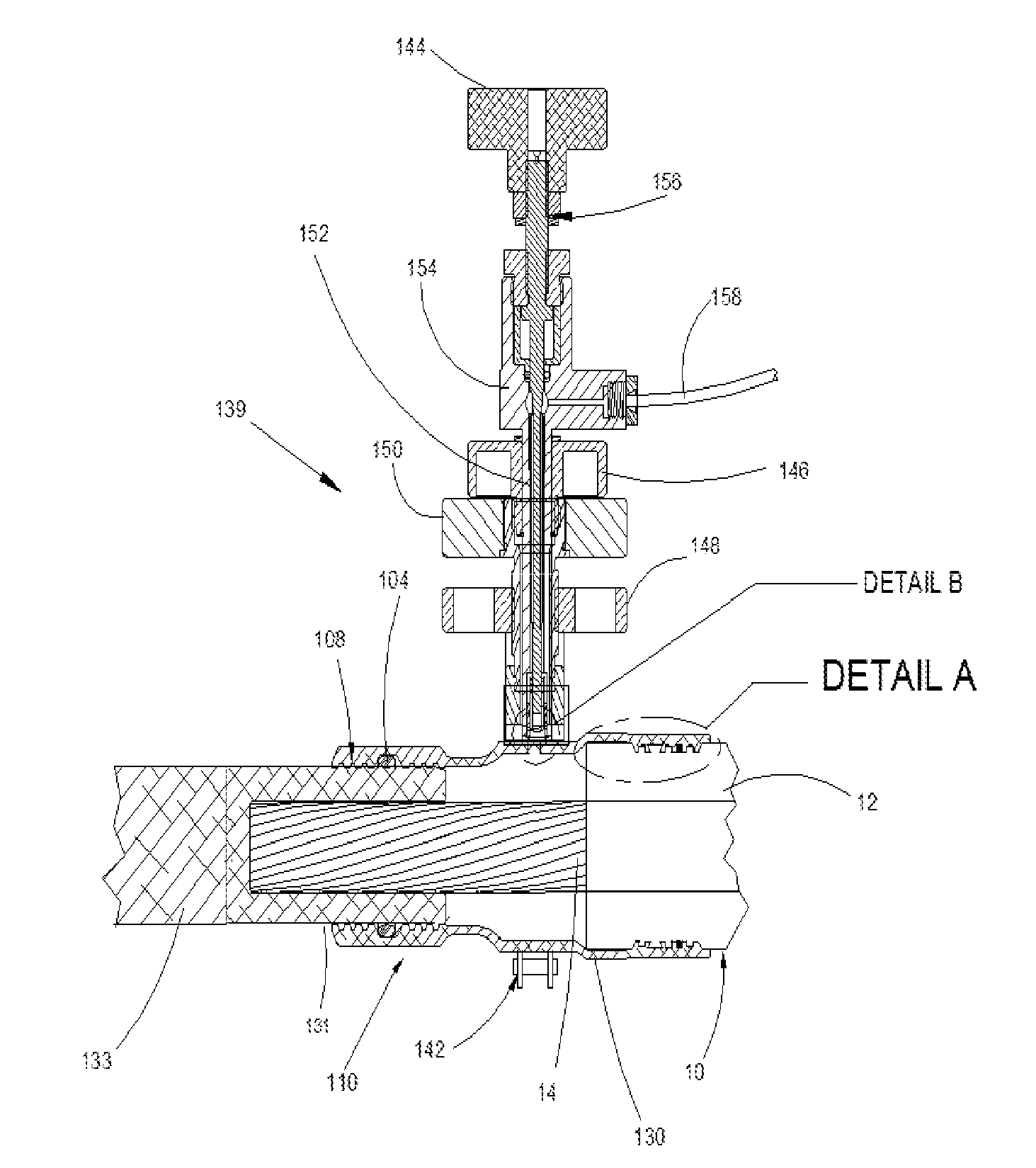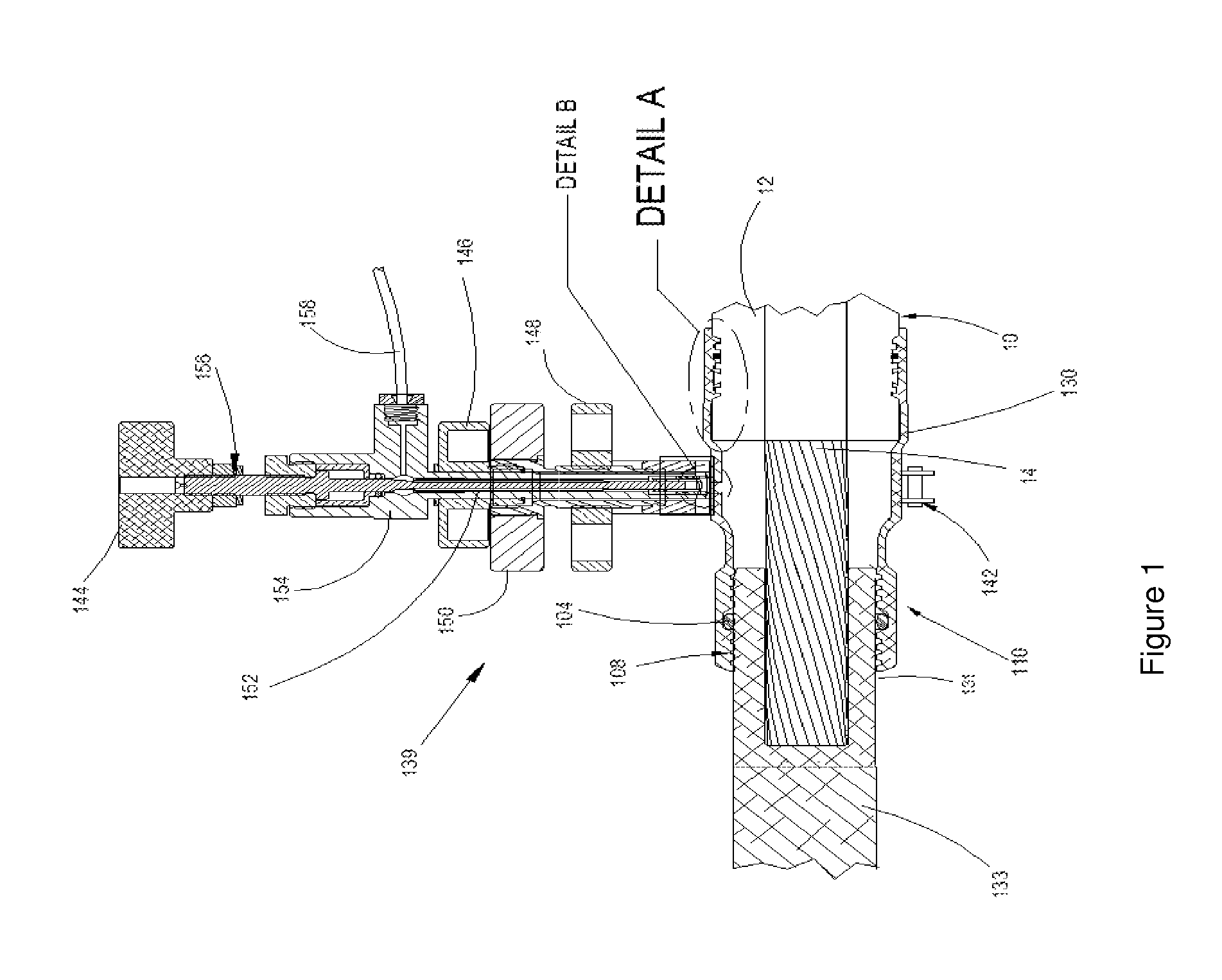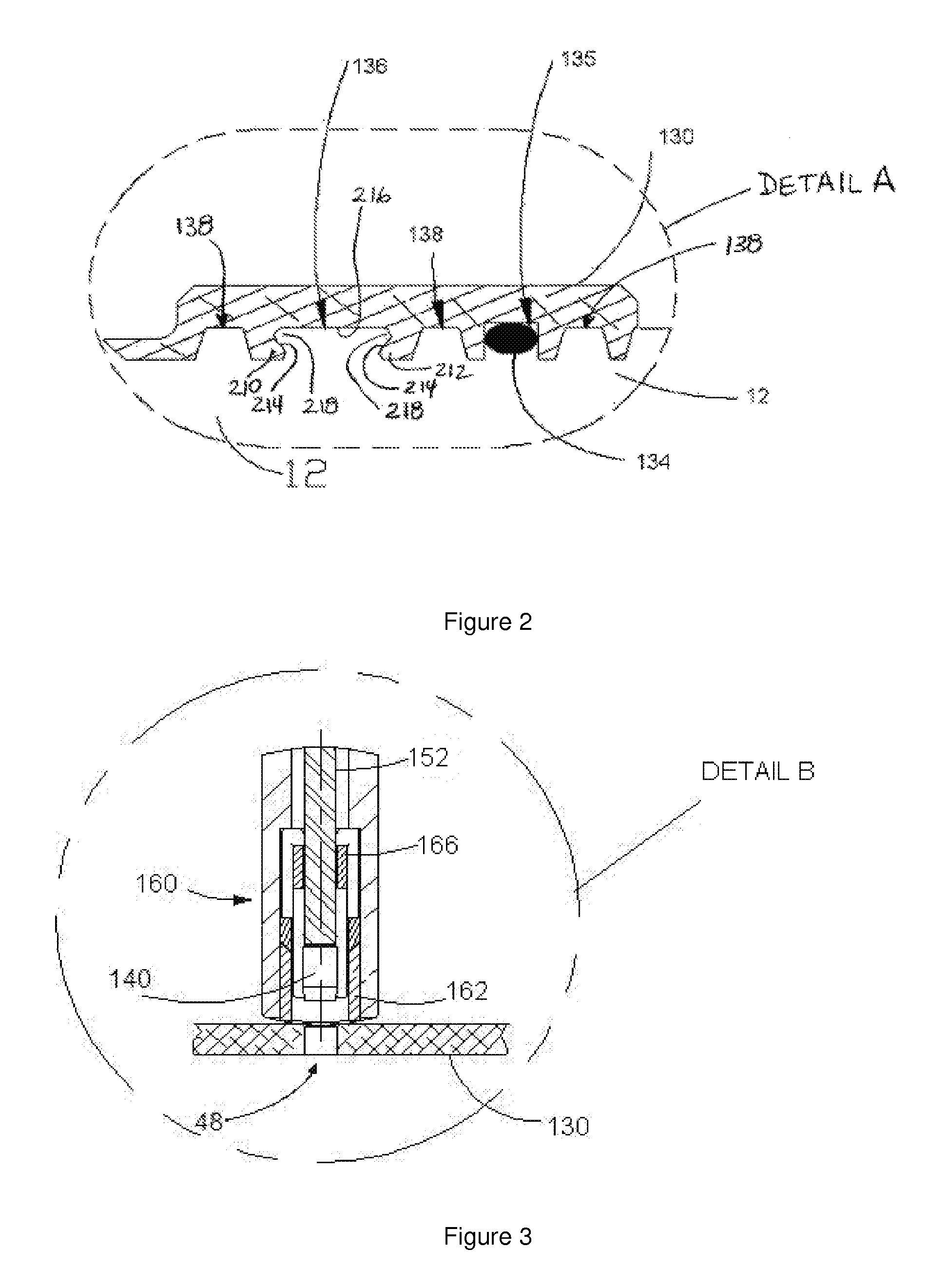Integrated method for restoring electrical power cable
a technology of electrical power cable and integrated method, which is applied in the direction of cable fittings in the presence of gas/oil, apparatus for repairing insulation/armour cables, line/current collector details, etc. it can solve the problems of not reaching the original anticipated longevity of 30 to 40 years, still having practical limitations when reclaiming underground residential distribution cables, and suffering premature breakdown. , to achieve the effect of improving efficiency, facilitating the rapid replacement of connectors, and improving overall efficiency
- Summary
- Abstract
- Description
- Claims
- Application Information
AI Technical Summary
Benefits of technology
Problems solved by technology
Method used
Image
Examples
Embodiment Construction
[0044]For the purposes herein, the in-service electrical cable according to the present integrated method is generally of the type used in underground residential distribution and typically comprises a central core of a stranded copper or aluminum conductor encased in polymeric insulation jacket. As is well known in the art, there is usually also a semi-conducting or high permittivity polymeric conductor shield positioned between the conductor and the insulation jacket. Further, there is often a semi-conducting insulation shield covering the insulation, the latter being ordinarily wrapped with a wire or metal foil grounding strip and, optionally, encased in an outer polymeric protective jacket. The above-mentioned interstitial volume is the void space within the conductor shield, and is defined by the strand geometry. The insulation is preferably a polyolefin polymer, such as polyethylene or a copolymer of ethylene and propylene or vinyl acetate or is a solid-fluid dielectric such a...
PUM
| Property | Measurement | Unit |
|---|---|---|
| Temperature | aaaaa | aaaaa |
| Time | aaaaa | aaaaa |
| Percent by mass | aaaaa | aaaaa |
Abstract
Description
Claims
Application Information
 Login to View More
Login to View More - R&D
- Intellectual Property
- Life Sciences
- Materials
- Tech Scout
- Unparalleled Data Quality
- Higher Quality Content
- 60% Fewer Hallucinations
Browse by: Latest US Patents, China's latest patents, Technical Efficacy Thesaurus, Application Domain, Technology Topic, Popular Technical Reports.
© 2025 PatSnap. All rights reserved.Legal|Privacy policy|Modern Slavery Act Transparency Statement|Sitemap|About US| Contact US: help@patsnap.com



